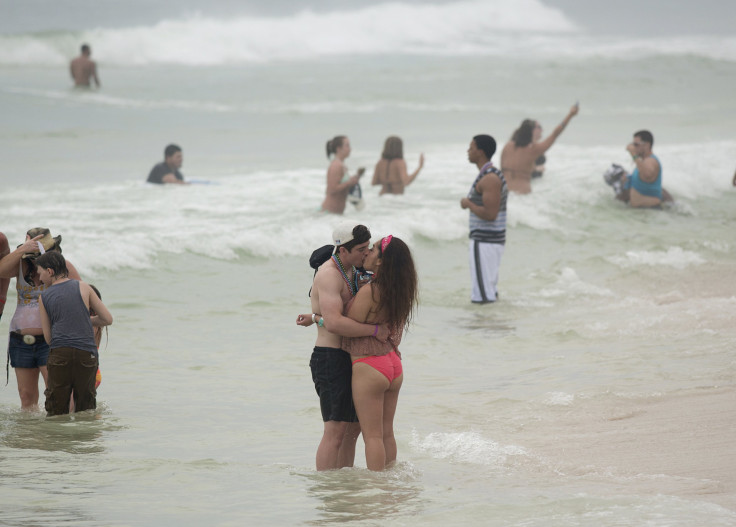What Is Seabather's Eruption? Florida Beach Tourism Economy Faces Sea Lice Outbreak

Florida health officials are warning locals and travelers about a growing sea lice outbreak that can leave swimmers with an itchy rash and, in severe cases, flulike symptoms. Seabather's eruption, as the invasion of the marine pests at beaches along the Gulf of Mexico has been dubbed, often goes undetected until hours after leaving the ocean, when red blisters start to form on the skin.
"Outbreaks of seabather's eruption occur intermittently between March and August, but they appear to peak during early April through early July," according to the Florida Department of Health. "Seabather's eruption appears to be caused by shifts in South Florida's currents, with the highest incidence of cases in such areas as Palm Beach County and Northern Broward County, where the Gulf Stream passes closest to shore."
The outbreak could prove problematic for Florida's many beach towns that rely on tourism. "Beaches are the most important feature of Florida’s brand, accounting for 25.5 percent of the state’s attractiveness to visitors," a state economic report determined last year.
Sea lice are actually the larvae of jellyfish. Because they are the size of a sand grain, they can seem invisible, making them hard to spot. They tend to become a problem after getting caught in swimmers' bathing suits or clothes, making the larvae sting. The rash can last two to four days, or as long as two weeks.
In Florida, Palm Beach County officials have posted sea lice signs to warn swimmers about outbreaks. Other beachfront communities hang purple flags along the shore to warn seabathers about the pests, ABC News reported.
'Sea lice' invade Florida beach — and you won't know you've been stung until the day after! https://t.co/6OIlxiGzjp pic.twitter.com/bMd2FixAeO
— Daily Mail US (@DailyMail) June 7, 2016
The rash often goes away on its own, but an antihistamine or hydrocortisone cream can provide relief. Bathing in colloidal oatmeal and applying calamine lotion are also recommended to get rid of the symptom known as "ocean itch." Victims sometimes also experience fever, chills, headaches and nausea.
Florida health officials recommend seabathers wear as little clothing as possible while swimming in warm waters and change into clean clothing soon after. They urge swimmers to wash swimsuits with household vinegar or rubbing alcohol before wearing them again.
"Each beachgoer needs to assess his or her individual risk of an immune response. Persons with a history of a severe reaction should confine their beach activities to land, or use pool facilities instead, during outbreaks," the Health Department warned.
Florida saw its worst sea lice outbreak in 1995, when an infestation spanned the state's waterfront from the Florida Keys to Jacksonville.
© Copyright IBTimes 2024. All rights reserved.












